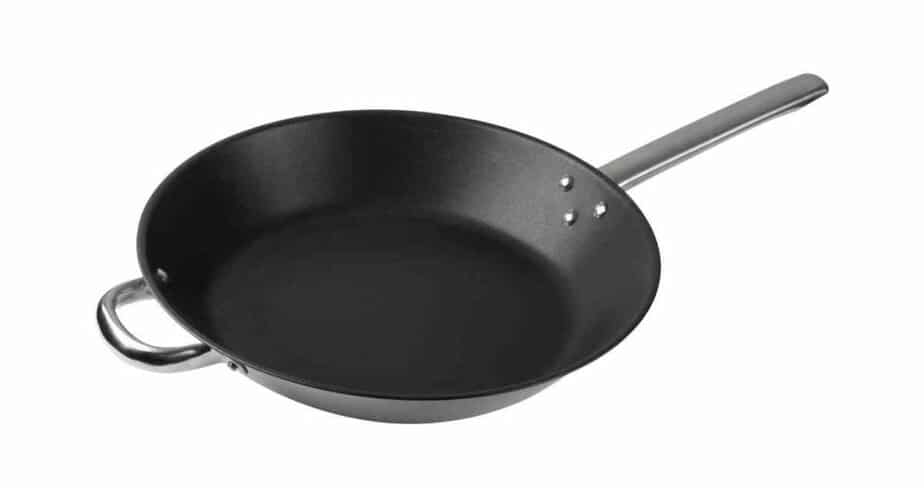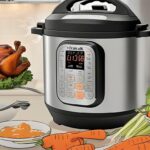In the vast realm of cookware, a fiery battle brewing between two culinary powerhouses. On one side, we have the daring and heat-conducting frying pan, ready to take on any cooking challenge with its ability to distribute heat and transform raw ingredients into culinary masterpieces evenly.
And on the other side, we have the cool and insulating insulator, a champion of heat retention and controlled cooking. It’s a clash of cooking techniques, where the searing sizzle meets the slow simmer of delicate flavors.
Join us as we explore the epic face-off between the frying pan conductor and the insulator, uncovering their unique strengths and discovering which one reigns supreme in pursuing culinary excellence. Get ready for a culinary showdown that will leave you hungry for more!
Comparison Chart:
| Aspect | Frying Pan Conductor | Insulator |
|---|---|---|
| Heat Conductivity | Excellent heat conductivity, allows for even heat distribution across the cooking surface | Low heat conductivity, inhibits heat transfer and promotes heat retention |
| Cooking Speed | Promotes faster cooking due to efficient heat distribution | Slower cooking due to limited heat transfer |
| Heat Retention | Generally has lower heat retention capabilities, which can result in quicker temperature changes | Exhibits high heat retention, allowing for controlled cooking and keeping food warm |
| Temperature Control | Provides more immediate and responsive temperature control | Requires longer preheating and slower heat adjustments |
| Searing and Browning | Achieves excellent searing and browning due to even heat distribution | May not achieve the same level of searing or browning due to limited heat conductivity |
| Energy Efficiency | Requires less time and energy to reach desired cooking temperature | Requires more time and energy to heat up and maintain temperature |
| Versatility | Suitable for a wide range of cooking techniques, including frying, sautéing, boiling, and stir-frying | More suitable for slow-cooking methods, such as simmering and braising |
| Safety | May pose a higher risk of burns due to the efficient heat transfer | Provides better heat insulation, reducing the risk of burns |
| Cleaning and Maintenance | Typically easy to clean and maintain | Requires gentle cleaning and may be more prone to staining or discoloration |
| Price Range | Offers a wide range of prices based on material and quality | Generally more affordable compared to conductive cookware options |
5 Major Differences Between a Frying Pan Conductor and Insulator?
- Heat Conductivity: A frying pan conductor offers excellent heat conductivity, allowing for even heat distribution across the cooking surface. On the other hand, an insulator has low heat conductivity, inhibiting heat transfer and promoting heat retention.
- Cooking Speed: Due to its efficient heat distribution, a frying pan conductor promotes faster cooking, reducing cooking times. Conversely, an insulator has slower cooking times due to limited heat transfer.
- Heat Retention: Frying pan conductors generally have lower heat retention capabilities, resulting in quicker temperature changes. In contrast, insulators exhibit high heat retention, allowing for controlled cooking and the ability to keep food warm.
- Temperature Control: Frying pan conductors provide more immediate and responsive temperature control, allowing precise adjustments. Insulators require longer preheating and slower heat adjustments due to lower heat conductivity.
- Versatility: Frying pan conductors suit various cooking techniques, including frying, sautéing, boiling, and stir-frying. Insulators are more suitable for slow-cooking methods, such as simmering and braising.
Which is better: Frying Pan Conductor or Insulator?
Each type of cookware has its strengths and advantages. Choosing between a frying pan conductor and an insulator depends on your cooking preferences and the dishes you plan to prepare. Here are some factors to consider:
A frying pan conductor is better when:
- You value even heat distribution for cooking techniques such as frying, sautéing, and stir-frying.
- You prefer faster cooking times due to efficient heat conductivity.
- You prioritize precise temperature control and immediate heat adjustments.
- You enjoy achieving excellent searing and browning on your ingredients.
- You prefer a versatile cookware option that can handle various cooking techniques.
An insulator is better when:
- You desire high heat retention for controlled cooking and keeping food warm.
- You prefer slower cooking methods, such as simmering or braising.
- You prioritize safety and want a reduced risk of burns due to better heat insulation.
- You value energy efficiency and are okay with longer preheating times.
- You plan to use it primarily for slow-cooking dishes and recipes.
Ultimately, the “better” option depends on your specific cooking style, desired cooking techniques, and the dishes you plan to prepare. Various cookware options to accommodate different cooking styles and culinary needs are always beneficial. Some individuals may find a frying pan conductor and an insulator useful in their kitchen, as they serve different purposes.
 Final Words
Final Words
Once again, any material that conducts or transfers heat when heated is a conductor. Examples of conductors are stainless steel, aluminum, cast iron, and other metals. On the other hand, any material that remains cold even when heated is an insulator. The handle of a frying pan is an insulator. Examples of materials that are insulators are wood, plastic, and Bakelite.
- What is a Stock Pot Used for in Cooking? - September 5, 2023
- How to Make Turkey Stock in Instant Pot - September 5, 2023
- How to Make Gravy from Pot Roast Stock - September 5, 2023






